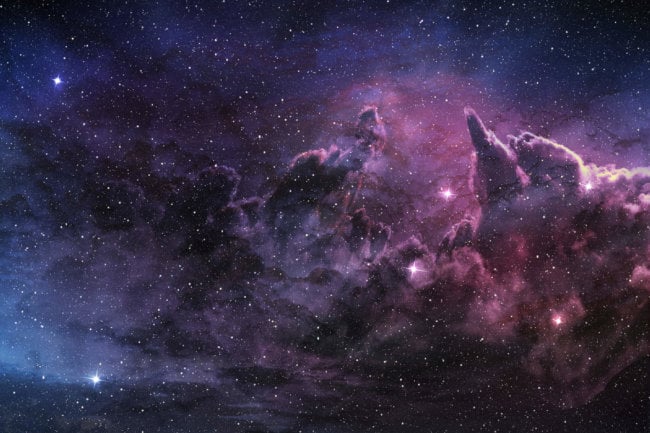
Many of us remember from childhood mnemonic the mnemonic “We’ll Meet Tomorrow, My Young Companion, a New Planet”, with which you can easily determine the location of the planets in the Solar system. In school we learned that the earth revolves around the sun, the Sun is a hot ball of gas, and we live in the milky Way galaxy. Some of us are well aware of the constellations of the sky or the phases of the moon. However, the day will come, space will change. Some changes will bring much more changes than just the exclusion of Pluto from list of planets. Whether it be total destruction or just lighting our sky, these changes will come and affect the Earth. So be prepared.
The Death Of The Sun
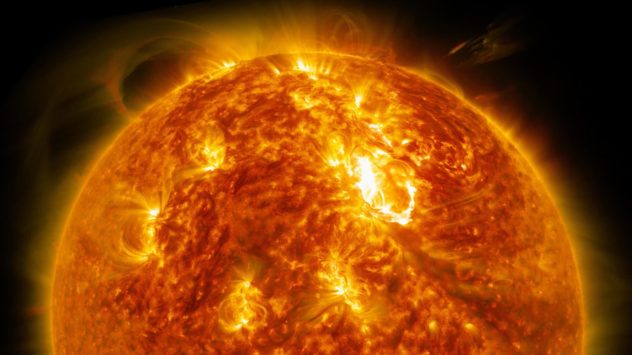
The stars are like living beings: they are born, live and then die. Our Sun is no exception. One day, at least 5 billion years, our precious Sun will die and this will have to be taken as fact.
A star dies when it runs out of fuel. During the life of the stars in them is nuclear fusion. The star takes hydrogen in its core, heats it to extreme temperatures and turns into helium. Then, when a star uses all its hydrogen it becomes a red giant. The outer layers cool and expand, and the core, now composed of helium, heats up and burns helium into carbon. Since then, the process can go in several different ways. If it is a very massive star, the fusion process continues, fusing heavier elements until iron and will not explode in a supernova. Supernovae leave behind a neutron star or a black hole.
Stars of smaller mass, like our Sun, will go in less dramatic ways. They expand into red giants, but will not explode and will throw of its outer layers, leaving bare nuclei. These remnants we call white dwarfs.
The consequences of the death Sun just incinerate the Earth. Despite the fact that the Sun will not explode like a giant firecracker, the extension simply “eat” mercury, Venus and Earth. When the Earth gets to hot, the expanding layers of the Sun will occur a few things. First, all the water will evaporate and disintegrate into components of water, hydrogen and oxygen. The hydrogen will be lost in the atmosphere, and oxygen in the ground. Second, our atmosphere will change a lot. It will consist mostly of nitrogen and carbon dioxide. These two effects will make the planet uninhabitable. In short, when the Sun dies, we die, if time does not fly away.
The collision of galaxies
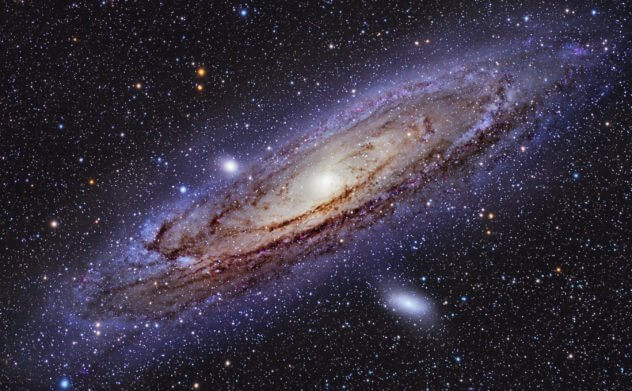
Before you start to worry about the death of the Sun, we will have something else. Our home, the milky Way will not always be our home. After 4 billion years, even before the death of the Sun, the galaxy will collide with the nearest spiral galaxy Andromeda.
This researchers found out when they measured the speed of Andromeda and realized that instead of a red shift, or remove from us, as predicted, the galaxy passes through a blue shift. These colors correspond to wavelengths of light that is emitted from the object. If the object is removed from us, the wavelengths of its light get longer and the light redder. A blue shift occurs exactly the opposite: when an object is approaching, the wavelength of its light is compressed. Further measurements and calculations has allowed scientists to determine the size, movement and speed of Andromeda. It turns out that the milky Way and Andromeda get closer with a great speed of 402,000 kilometers per hour.
As for the Solar system to worry about. The chances that our Solar system and the Sun will be discarded or destroyed are very small, because the collision of galaxies is not like the usual collision. It’s not that two cars collided head-on. Two galaxies will spiral curled between them like animals in the mating dance, coming closer and closer. In the process of this dance will be the first to touch the edges of galaxies. Follow certain violations, but the changes of the Solar system and the Sun will be almost imperceptible. In the last stage of the merge all the stars will begin to belong to one of the gravitational centers. Finally, the two supermassive black holes in the center of each galaxy will merge, absorbing the surrounding matter. Surrounding the new center of the star, including the Sun, are ejected and form an elliptical galaxy.
Because the Earth will survive and the Sun still won’t die, the future earthlings will be able to witness this incredible event. Add yourself to the calendar.
The Explosion Of Betelgeuse
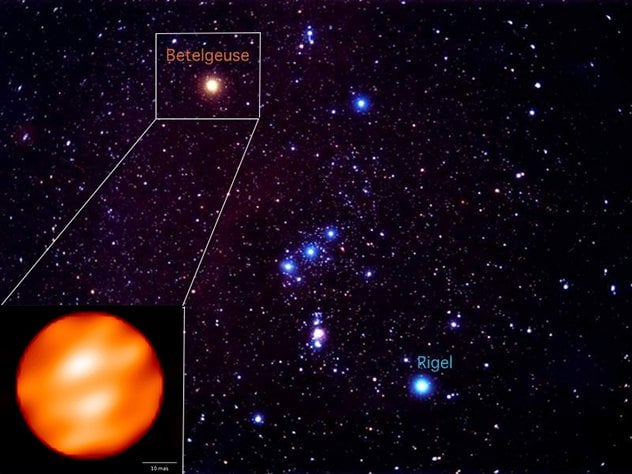
This item of our list is not catastrophic and will not be a major impact on the Universe. However, it will completely change our night sky and will make many curious eyes to cling to the eyepieces of telescopes.
Betelgeuse is a red giant, reddish glow which can be seen in the Northern hemisphere. It is located in the constellation of Orion is his “right hand”, so to observers, the star will be left in the massive constellation, just above the belt.
Unlike our sun, Betelgeuse is a massive star, living the last days of his life. Being a red giant, it burns helium in its shell and carbon along with other heavy elements in the core. Someday this star will explode in a supernova. It can happen literally at any moment, so don’t miss out.
Betelgeuse, a member of the milky Way, has become the ninth the brightness of a star in our sky, so when it explodes, it will be brightness comparable with the Moon. The night will not only be as bright as day, but during the day it also can be observed. Supernova will be visible for several weeks, until the subject will grow, reaches a maximum luminosity and then fade away.
In the milky Way was not a supernova since 1604. Then, the scientist Johannes Kepler saw a supernova that would later be named in his honor. The last time a supernova of considerable brightness was visible to us from Earth, was in 1987. Supernova 1987A disappeared in the Large Magellanic Cloud, one of the galactic neighbors of the milky Way. Since there were many supernovae, but the obvious was the only supernova 1600 years. It was visible only in the southern hemisphere, though the brightness it was not the same as is Betelgeuse.
The extension of the Solar system
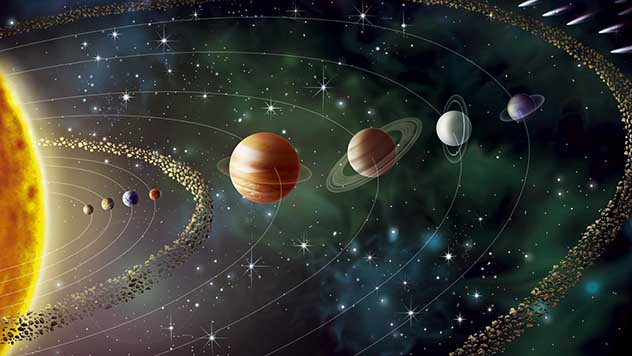
If you thought you had to memorize the order of eight or nine planets in childhood find it difficult, add one more.
Yes, in the Solar system may be more than one hundred objects. This does not mean that will be discovered over a hundred planets, it is the definition of planets may change so that will include more than a hundred other bodies, such as the moon and Pluto. Earlier this year scientists began to argue about what defines a planet, and, as always, a dispute broke out in earnest.
The modern definition of a planet means the body with strong gravity and their own possessions. For example, the Earth is a planet because it is large and has its own gravitational territory. The moon, which hundreds of years ago was considered a planet, the planet today is not because the Earth revolves around, being subordinate to her. This definition was put forward in 2006 and ultimately demoted Pluto to the rank. This year was the proposed “new” definition, dealing with less gravity and more — part of the world. On it, a planet is any body that is massive enough to have its own gravity, but not massive to start nuclear fusion and burn like a star. By this definition, planets will be the Moon, the moons of Pluto, Pluto and the other objects in the Kuiper belt.
Although this definition has no physical impact on the Earth, it is very important. Just imagine how many objects will have to remember the children in the schools, if the families list, our Solar system will include hundreds of them.
The ninth planet again
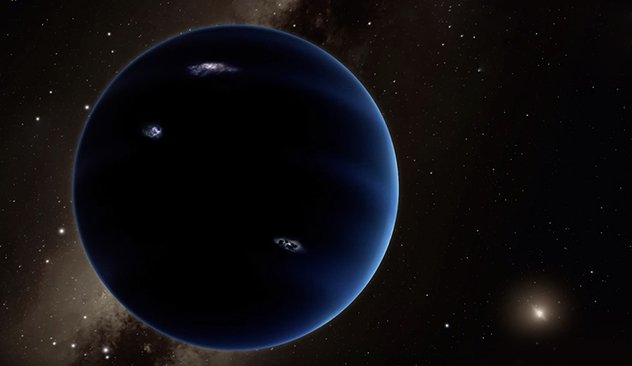
Instead of having to add hundreds of planets, scientists from California last year announced a possible opening of the “ninth” planet lying beyond Neptune. Is a giant ice body has to be ten times more Land and have a powerful gravitational field. Therefore, it will fit into the modern definition of gravitational dominance, and also in the “new” definition.
The only but: the scientists have not yet seen this planet. They don’t even know whether it exists, but everything tells in favor of this. It’s all in the behavior of people around this planet tel Orbits of distant objects behave as if they are influenced by an unseen force. This unseen force may be a planet. Now, its searches are two telescopes. The farther the object is, the harder Sun light to reach it, so the planet is very dark.
If the planet you will find — and if it is a planet it will completely change our view of the Solar system.
Care Of The Moon
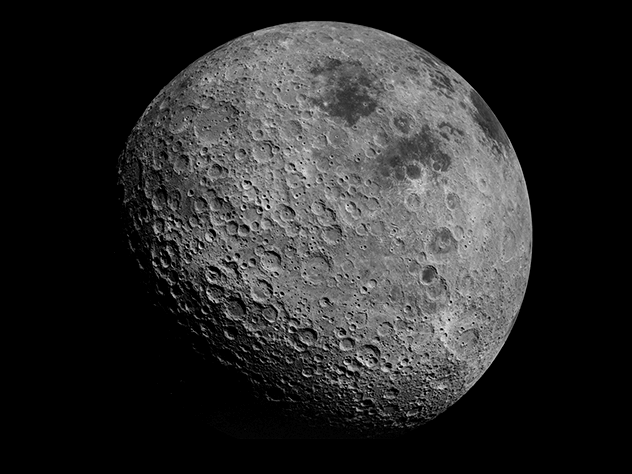
The moon, the eternal companion of the Earth that are next to billions of years, gradually moving away from the Earth by about 1.48 inches per year. This is due to the action of tidal forces. The gravitational and tidal forces that the Moon and Earth exert on each other, causing friction. This friction is pushing the earth’s tides to the moon. This push tries to accelerate the moon, but instead is balanced. The moon is gradually losing energy and slowing down in orbit, slowly floating away.
This small change can have many important consequences for Earth and for us. For example, to change the length of the day. When the moon and the Earth first formed 4.5 billion years ago, days were only 5 hours long. Each year the day increased by 0,0000152 seconds. Via 250 000 000 years days will be 25 hours. Great news for those who don’t have time to do everything during the day, but not very environmental.
Slowing the rate of rotation of the Earth would sway her, just as swinging a slowing spinning top. This rocking will greatly affect times of the year, will lead to powerful changes in temperature will kill many plants and animals that do not have time to adapt. However, the people to worry about.
The Martian rings
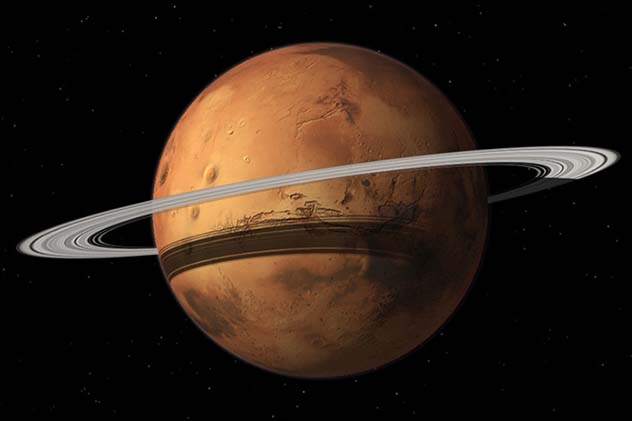
Again, this is not the most catastrophic, but a very nice change. Just it will be inevitable as the explosion of Betelgeuse, and we’ll see him in the sky.
It is unlikely we will see it with the naked eye, but after 70 million years, Mars will ring. One of the Martian moons Phobos is moving towards the red planet. Once it reaches a certain point, the gravity of Mars will do their and tear the moon to pieces. Debris will be captured by the orbit and will start circling around the planet, forming a ring.
Although this is not much impact on the Ground, it’s a good excuse to uncover the telescope.
The destruction of the Solar system
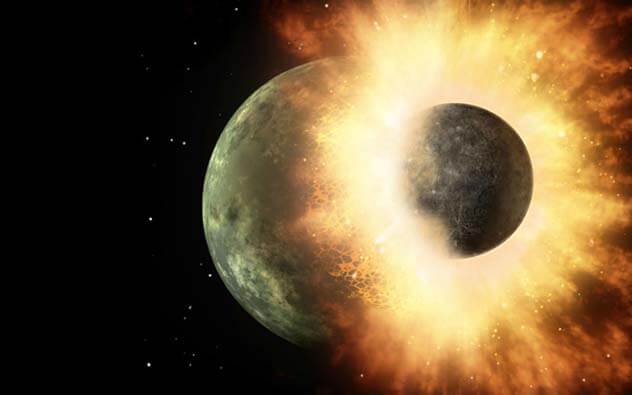
There is a small but tangible chance that the orbits of the four inner planets will become absolutely chaotic and lead to destructive collisions. It starts with mercury’s orbit. First, its orbit around the Sun becomes more eccentric the ellipse. That is, elongated. Second, the precession is also changed. The orbital eccentricity is an important parameter. Scientists have found that Jupiter’s gravity could capture the mercury and pull the planet, potentially catching Venus. Another possible scenario could be this: mercury will go beyond the orbit of Venus and collide with the Earth. If the first happens, the Earth may be in order. If the latter, we will die.
But do not panic. Although these scenarios cannot be discounted, the chances that at least one of them will come out to be very small. Anyway, three billion years to prepare we will.
The Earth’s core has cooled
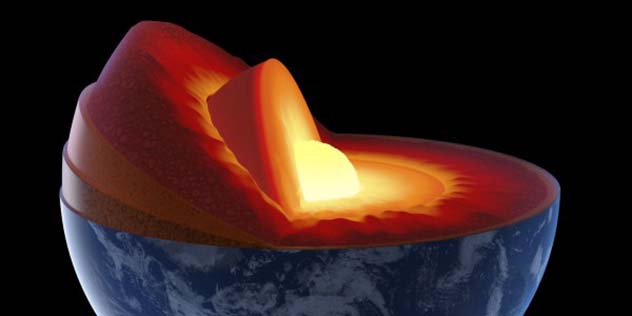
The earth is a very hot, but her molten core cools and when it reaches a certain temperature, the planet will be no more.
Currently – at the same time freezes and melts. When the core begins to cool and freeze, it emits thermal energy in the metal rich region between the core and the crust, called the mantle. This creates convection in the mantle, when heat rises and cold descends. Currents move the magnetic iron, creating the Earth’s magnetic field. Although this is a “normal” process, in some places along the line of core-mantle energy of the mantle is returned to the kernel, and these stains will melt.
We see that the kernel simultaneously loses and gains heat, but if the engine is just cooled completely, the effects will be devastating. The greatest effect is waiting for our protective magnetic field. If the kernel will freeze and convection will stop and the magnetic field will cease to be produced. We all know that the magnetic field protects the Earth from the dangers of space. Without it, the planet will be open radioactive waves and scorching solar winds.
Although this is unlikely to happen, delete this event completely worth it. Sometimes it’s better just not knowing what will happen.
A Big Gap
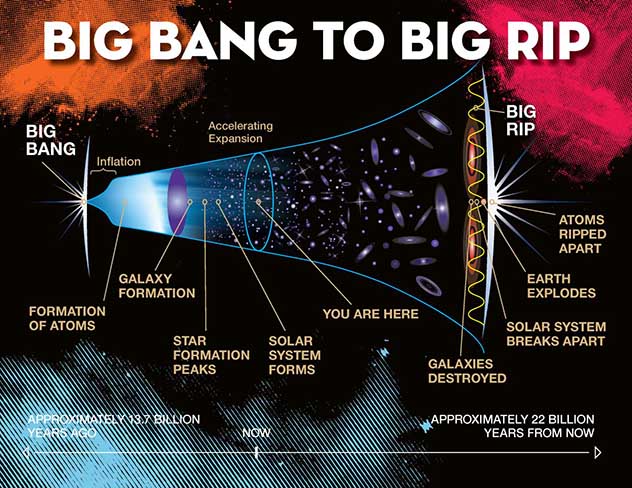
This scenario is too hypothetical, and the cooling of the Earth’s core, but is associated with a phenomenon that periodically occurs. Scientists proved that the universe is expanding and accelerating. Accelerated expansion of the Universe is fully justified mathematical predictions, and one of the outcomes of this extension sheds light on not the most pleasant fate.
The so-called Large Gap is the opposite of the Big Bang. In the process of the Big Bang formed the universe and everything. A large Gap would be akin to the destruction of everything created. According to the theory, the faster the expansion, the stronger dark energy. Once the force of dark energy will reach a point after which the other objects and forces will not be able to resist and be torn apart.
Including us.
10 changes that will forever transform the familiar space
Ilya Hel